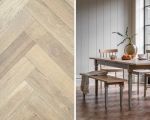How to Install a New Skylight in the Living Room
- -Understanding the Benefits of Installing a Skylight
- -Planning and Preparation for Skylight Installation
- -Choosing the Right Skylight for Your Living Room
- -Step-by-Step Guide to Installing a Skylight
- -Common Mistakes to Avoid When Installing a Skylight
- -How Improvement Can Help You Find the Best Skylight Products and Services
Understanding the Benefits of Installing a Skylight
Skylights are a fantastic way to bring natural light into your living room, transforming the space with bright, airy illumination. Not only do they enhance the aesthetic appeal of your home, but skylights also help improve energy efficiency by reducing the need for artificial lighting. During the colder months, the heat from natural sunlight can even warm up your living room, reducing heating costs. Additionally, they offer ventilation options and can improve air quality, especially when installed with operable features.
Installing a skylight can make your living room feel more open and spacious. For homes with limited access to natural light, such as those surrounded by tall trees or buildings, a skylight is a perfect solution to brighten up the space without the need for costly renovations or large windows. If you're considering this improvement for your home, understanding the installation process is key to ensuring that the project is successful and enhances your living room to its full potential.
Planning and Preparation for Skylight Installation
Before installing a skylight in your living room, planning and preparation are crucial to ensuring a smooth and successful installation. One of the first steps is to assess your roof’s structure and determine the best location for the skylight. The ideal spot will allow ample sunlight to penetrate the living room while avoiding areas where the roof's structural integrity could be compromised.
You'll also need to check whether your roof is sloped or flat, as this will influence the type of skylight you can install. For sloped roofs, a curb-mounted skylight may be the best choice, while flat roofs may require a fixed skylight or a more complex installation setup. It’s essential to consider the angle of your roof, the surrounding environment, and whether you need to address any insulation issues during installation.
Additionally, consult local building codes to ensure that your skylight installation complies with any relevant regulations. You may need permits for the project, especially if you're altering the structure of your roof. Understanding these requirements early on will help avoid delays during the installation process.
Choosing the Right Skylight for Your Living Room
Choosing the right skylight for your living room is essential to achieving the desired outcome. There are several factors to consider when making this decision, such as the type, size, and material of the skylight. Start by determining the size of the skylight. A larger skylight will allow more natural light into the room, but it could also lead to higher energy costs if it is not properly insulated or shaded.
Skylights come in various types, including fixed, vented, and tubular models. Fixed skylights do not open and are perfect for those who simply want to bring in light without ventilation. Vented skylights can open and close, allowing for airflow, which can be especially useful for controlling temperature and humidity levels in your living room. Tubular skylights are smaller, compact units that are ideal for areas where space is limited but you still want to benefit from natural light.
The material of the skylight is another critical consideration. Glass is the most common material used for skylights, but there are variations like double-glazed or tinted glass that can improve insulation and reduce solar heat gain. Polycarbonate skylights are also available, offering high impact resistance and better insulation properties than glass, though they may not provide the same level of clarity.
Step-by-Step Guide to Installing a Skylight
Once you've chosen the right skylight for your living room, it's time to install it. Here’s a step-by-step guide to help you with the process:
- Step 1 - Measure and Mark the Area: Begin by measuring the space where you want to install the skylight. Use a pencil to mark the exact spot on the ceiling where the skylight will be placed. Double-check your measurements before cutting into the ceiling.
- Step 2 - Cut the Opening in the Ceiling: Using a saw, cut along the markings to create the opening for the skylight. Be sure to carefully cut through the drywall and any ceiling beams, making sure the cut is as precise as possible.
- Step 3 - Install the Flashing and Curb: The next step is to install the flashing around the opening to prevent leaks. The curb is a frame that supports the skylight and helps it fit securely into the roof. Install the curb using screws or nails, ensuring it is level and securely attached.
- Step 4 - Mount the Skylight: Position the skylight onto the curb and attach it using screws. If the skylight is vented, make sure the mechanism is working properly. Check for any gaps or spaces around the skylight and seal them with waterproof caulk to ensure a tight fit.
- Step 5 - Seal and Insulate: To prevent heat loss and ensure the skylight is energy-efficient, seal around the edges with foam insulation and caulking. Proper insulation will help maintain your living room's temperature and reduce energy costs.
- Step 6 - Finish the Ceiling: Finally, repair the ceiling around the skylight opening. This may involve installing drywall or adding trim to ensure the installation is visually appealing and professionally finished.
Once the skylight is securely installed, ensure everything is functioning properly. Test any opening or closing mechanisms if applicable, and check for leaks after the next rainstorm. Properly installed skylights can be a long-term asset to your home, providing natural light and beauty to your living room.
Common Mistakes to Avoid When Installing a Skylight
When installing a skylight in your living room, there are several common mistakes to avoid. One of the biggest errors homeowners make is choosing the wrong size skylight. If the skylight is too large, it could lead to excessive heat loss in the winter or cause the room to become too hot in the summer. Similarly, selecting a skylight that is too small might not provide enough light to brighten up your living room.
Another mistake is improper sealing and insulation around the skylight, which can lead to water leaks, air drafts, and increased energy costs. It’s crucial to ensure that the skylight is properly sealed with high-quality materials and that insulation is applied correctly. Failing to follow the manufacturer's instructions can also result in an inefficient installation or void your warranty.
How Improvement Can Help You Find the Best Skylight Products and Services
If you're looking for high-quality skylight products or need professional installation services, Improvement is here to help. Our platform offers a wide selection of skylights, ranging from traditional glass models to more modern, energy-efficient options. Additionally, we provide access to experienced professionals who can guide you through the installation process, ensuring that your skylight is installed safely and efficiently. Visit Improvement today to explore our range of skylights and connect with the best service providers in your area.








